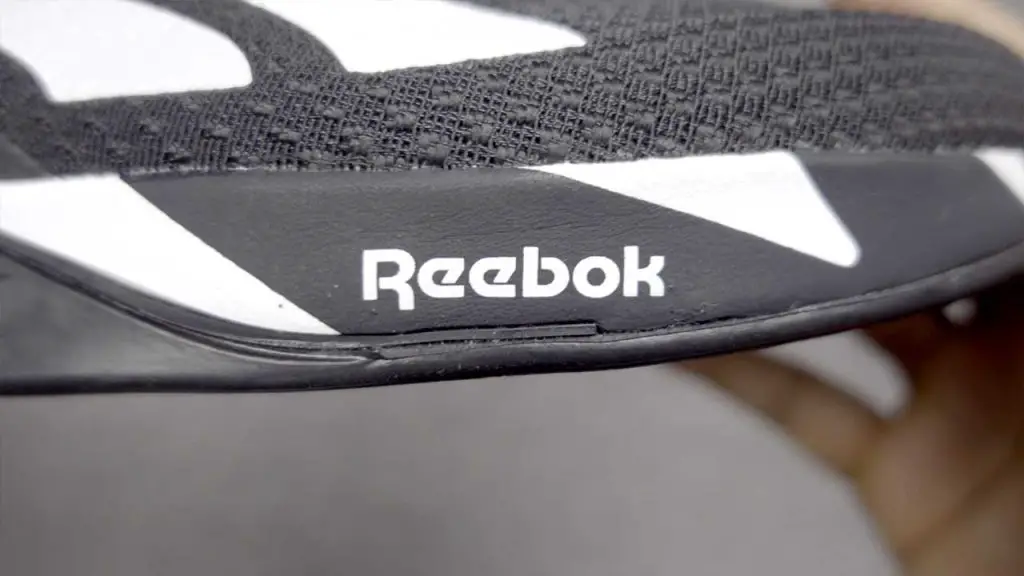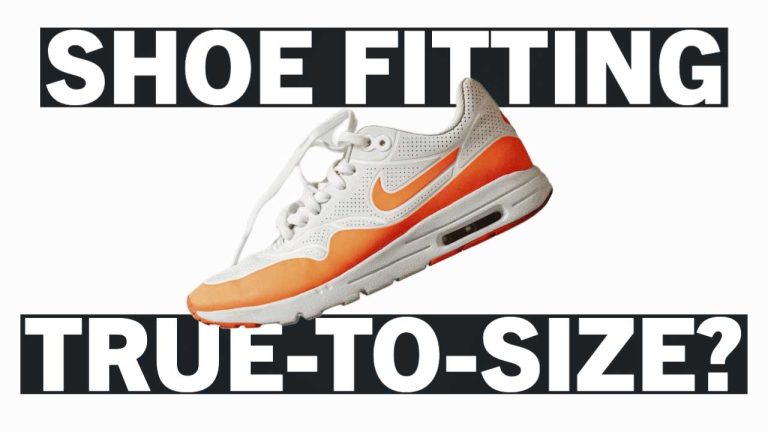Are Reeboks True to Size? Find Out in Our Comprehensive Guide

ListedFit is reader-supported. When you buy through links on our site, we may earn a small commission.
When shopping for sneakers, one of the most important factors to consider is finding the right fit. Ensuring that the shoes you purchase provide the proper support and comfort can make all the difference in your daily activities.
As a popular brand, Reebok is known for offering a wide range of styles and designs, but the question many people ask is, “are Reeboks true to size?”

Quick Sum-Up
Generally speaking, Reeboks tend to run true to size, making it simpler for customers to purchase their usual size with confidence. It is worth noting that some styles may fit slightly differently, which is why it’s always advisable to consult Reebok’s official size chart and measure your feet to ensure the most accurate fit. This can help to make the shopping experience more enjoyable and successful.
It is also important to keep in mind that there may be some model-specific fit considerations. For example, the Classic Leather design is known to run narrow. Recognizing these differences can help consumers make informed decisions when purchasing Reebok shoes, ultimately leading to greater satisfaction and comfort.
Table of Contents
Reebok Sizing Fundamentals
Finding the right fit for your footwear is crucial. When it comes to Reebok, understanding their sizing system is key to making an informed purchase.
Are Reeboks ‘True to Size’?

Generally speaking, Reebok sizing is true to size. However, not all Reebok shoes are created equally, so it’s essential to refer to specific size charts for individual models.
When figuring out if a shoe runs big or small, which can be helpful when considering different Reebok models. Comparing Reebok’s sizing to other brands like Nike and Adidas is also useful for those who are familiar with those brands.
Size Chart Differences: US, UK, EUR, and More
Reebok size charts cater to various international sizing systems, including US, UK, and EUR. To find the perfect fit, it’s necessary to understand the differences between these sizing systems and locate the corresponding size for your measurements.
Here’s a brief overview of the size chart differences:
- US: Reebok uses the US sizing system for both men and women, with sizes ranging between 3.5 to 14 for men and 5 to 12 for women.
- UK: In the UK sizing system, men’s sizes range from 3 to 13, while women’s sizes range from 2.5 to 10.5.
- EUR: European sizing is also available, with men’s sizes ranging between 34.5 and 48.5, and women’s sizes between 35.5 and 44.
When navigating the Reebok size chart, it’s essential to measure your foot and compare it to the charts provided, ensuring an optimal fit for your specific needs.
Comparing Reebok Sizing to Other Brands
In this section, we’ll delve into how Reebok sizing compares to other popular shoe brands such as Adidas, Nike, New Balance, Vans, and Puma.
Reebok Vs Adidas
Reebok and Adidas sizing can be slightly different, as they are two separate brands with their own unique fits and designs. However, both companies are now under the Adidas Group, which means their sizing has become more standardized over time.
In general, Reebok shoes tend to have a slightly wider fit than Adidas shoes, which are known for their snug, narrow fit. This means that if you have wide feet or prefer a roomier fit, Reebok shoes might be a better choice for you.
Reebok Vs Nike
When comparing Reebok and Nike, the latter is found to have a one full US size difference for both men’s and women’s sizing. Reebok shoes generally run true to size in contrast to Nike, which often runs a bit smaller. Each brand has its unique foot shape design, so it’s always a good idea to check the specific sizing information for each shoe.
Reebok Vs New Balance
Reebok and New Balance’s sizing is relatively similar, with both brands offering true-to-size fitting for their athletic wear. It is still recommended to refer to the specific sizing charts for each shoe, as some footwear models may slightly differ in terms of width, arch support, and overall fit.
Reebok Vs Vans
For casual shoes, Reebok’s sizing is different from Vans. Vans shoes typically have a smaller, narrower fit as opposed to Reebok shoes. It is vital to consider your foot shape when choosing between these two brands, as Vans caters more towards those with slim feet, while Reebok tends to provide a more comfortable fit for wider feet.
Reebok Vs Puma
When it comes to Reebok and Puma, both brands offer a true-to-size fitting for their athletic footwear. Puma might run slightly narrower than Reebok, which suits those with a slim foot shape.
Finding the Perfect Fit for Reebok Shoes
Measuring Your Feet
Before purchasing Reebok shoes, it’s crucial to measure your feet. This will ensure a comfortable and supportive fit. To do this, stand on a piece of paper and trace the outline of your feet.
This is a very helpful video on how to measure your feet in the right way.
Then, measure the length and width of the outline at the longest and widest points. Convert these measurements into centimeters or inches to find the corresponding size on the Reebok size conversion chart.
Considering Width and Comfort
You have to keep in mind that getting the right foot width can also play a significant role in finding the right shoes for your workout.
If the shoe isnt wide enough your stability and comfort will suffer.
Reebok do offer a variety of widths to accommodate different foot types. For those with wide feet, it’s essential to select a specific model or style designed to provide a more roomy and comfortable fit.
Reebok sneakers are known for their comfort and support. When trying on different models, make sure that the shoes feel snug without being too tight. Additionally, consider the level of cushioning and arch support to further enhance your wearing experience.
What If You Are In-Between Sizes?
Sometimes you can find yourself in an uncertain position when it comes to choosing Reebok shoe sizes, especially if your foot size falls in between two sizes. This section will provide guidance on what to do when in between sizes, with sub-sections focusing on choosing a smaller or larger size, and trying different styles and models.
Going for a Smaller or Larger Size
When facing a sizing issue with Reebok shoes, consider your desired fit and comfort. If you prefer a tighter fit and believe the shoes might stretch over time, opting for a smaller size can be a good idea.
A lot of shoes especially shoes with leather uppers do have a break in period where they take to the mold of your foot.
On the other hand, if you desire more room and expect to wear thicker socks in the winter for example, then sizing up would be the better choice.
Are Reeboks True To Size – FAQs
Why Do My Reebok Shoes Squeak?
Squeaking in shoes, including Reebok shoes, can be caused by a variety of factors. Some of the most common reasons are:
1. Moisture: If your shoes have been exposed to water or sweat, moisture can get trapped between the insole and the midsole or within other parts of the shoe, causing a squeaking sound as you walk.
2. Friction: Squeaking can occur when two parts of the shoe rub against each other, such as the insole rubbing against the interior of the shoe or the tongue rubbing against the laces.
3.New shoes: Sometimes, new shoes may squeak as they are breaking in due to the stiffness of the materials. This squeaking may go away as the shoes become more flexible with use.
4. Worn-out soles: Shoes with worn-out soles can become uneven, causing friction and squeaking as you walk.
To address the squeaking issue, try these solutions:
1. Dry your shoes: Remove the insoles and let the shoes air dry in a well-ventilated area. Avoid using direct heat sources like radiators or hair dryers, as they may damage the shoe materials.
2. Use talcum powder or cornstarch: Sprinkle some talcum powder or cornstarch inside the shoes and on the insoles to absorb moisture and reduce friction.
3. Check for loose parts: Inspect the shoes for any loose parts, like a detached insole or a damaged heel, that might be causing the squeaking sound. If necessary, secure or replace the problematic parts.
4. Lubricate the squeaky areas: Apply a small amount of silicone lubricant or WD-40 to the areas causing the squeaking sound. Be cautious not to overdo it, as excessive lubrication can stain the shoes.
5. Break in the shoes: If the squeaking is due to new shoes, give them some time to break in. The more you wear them, the more flexible and comfortable they will become, and the squeaking may stop.
If the squeaking persists or the shoes are damaged, it may be time to consider replacing them with a new pair.
What Are The Most Comfortable Reebok Shoes?
I can only speak from my experience, I would say that the Reebok Classic Workout Plus leather shoes are a very comfortable shoe.
I have owned several pairs of them and they have always been a shoe I can wear or long periods of time without any discomfort.
Another Reebok shoe that I found really comfortable would be the Allen Iverson ‘The Answer’ shoes, I owned them in the 90s and they were very comfortable to wear and play basketball in, they have lots of padding and the DMX sole makes walking in them a very pleasurable experience.
I was pleasantly surprised to see them being re-released recently too which was amazing!
Author
-
Stuart Patrick is a health and fitness lifestyle journalist who writes for ListedFit.com.
“I've spent a lot of time trying to get in shape and change my body and I realised there are so many untruths in the health and fitness industry that can slow down or stop your progress, so I share my knowledge and experience to help others to cut through the BS.”
Latest entries
 MacaMarch 17, 2024Which is Better: Black or Red Maca? Comparing Benefits and Uses
MacaMarch 17, 2024Which is Better: Black or Red Maca? Comparing Benefits and Uses FitnessFebruary 18, 2024Join the Discount Club Today!
FitnessFebruary 18, 2024Join the Discount Club Today! KitchenFebruary 5, 2024Best Almond Milk-Making Machines 🥛 Cheap vs Expensive?
KitchenFebruary 5, 2024Best Almond Milk-Making Machines 🥛 Cheap vs Expensive? Barefoot ShoesDecember 18, 2023Can Barefoot Shoes Be Bad for You? Exploring the Potential Downsides
Barefoot ShoesDecember 18, 2023Can Barefoot Shoes Be Bad for You? Exploring the Potential Downsides
Affiliates:
This post may contain affiliate links that at no additional cost to you, the site may earn a small commission. We only recommend products we would use ourselves and all opinions expressed on this site are our own.
General Advice:
The information provided in this article is for general informational purposes only. It is not intended as a substitute for professional advice. Always consult with a qualified healthcare professional before starting any new diet, exercise program, or making changes to your health routine.
Accuracy Advice:
While we strive to provide up-to-date and accurate information, the content in this article may not reflect the most current research or medical guidelines. We encourage readers to do further research and consult with professionals for more personalized advice.
Our Recommendations:
The products and services mentioned in any of our articles are recommended based on our independent research and personal experience. We are not sponsored by any company. We aim to suggest products and services we believe are of high quality and could be beneficial to our readers.





